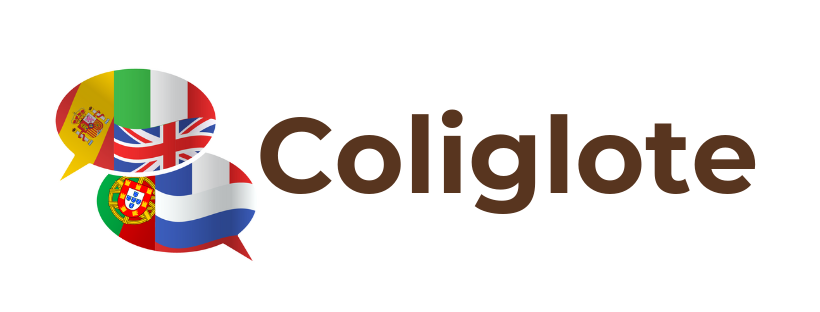Esperanto, a language entirely constructed and invented in the 19th century, is still being learnt and practised on a daily basis.
It is a language that has its own culture, its own literature, its own magazines… but not its own country! It does not belong to a country or a people, but to a community of speakers. It is a supranational language (one that goes beyond the borders of a nation), because about 2 million people have learned it in 120 countries around the world.
– What does this language look like?
– By whom and for what reason was it invented?
– Why and how can you learn Esperanto?
What does Esperanto look like?
The first time one hears Esperanto, one is astonished. First of all, this language doesn’t look like anything we know, but all of a sudden it seems to us that we can grasp one word, then another, then nothing new. The explanation is very simple: Esperanto has 70% Latin roots, which brings it closer to Indo-European languages.
Its alphabet consists of 28 letters and is derived from the Latin alphabet. It is very easy to recognise because it is almost identical to the letters of the international phonetic alphabet to which have been added the ĉ, ĝ, ĥ, ĵ, ŝ and ŭ which are not included.
It can be written in upper or lower case.
There are a few very simple rules to remember about its pronunciation :
– Each letter always sounds the same.
– Each sound is always associated with one and the same letter.
– There is one syllable for each vowel and vice versa.
– When a word has several vowels, the tonic accent should be on the penultimate syllable, so it should be pronounced a little louder.
– All letters are pronounced: there are no dumb letters.
– To name the consonants you have to add an “o”, for example bo, co, fo, jo … and to name the vowels, you just have to pronounce them.
Esperanto: invented by whom and why?
Esperanto is a constructed language, proposed in 1887 by a young Russian ophthalmologist, Louis-Lazare Zamenhof, to facilitate communication between all those who do not have the same mother tongue. He signed his language project by “Doktoro Esperanto”, hence the name of the language.
The idea of its creator was to invent a universal language in order to finally eradicate the problem of the language barrier which prevents certain communities from understanding each other, which prevents global discussions on the same subjects that concern us… If everyone spoke the same universal language, this would allow us to have a global and new look at social, cultural and political issues that concern us all.
Moreover, Esperanto was also invented with the aim of eliminating linguistic discrimination, as we explain later in the article.
Why and how to learn Esperanto?
Reason 1: It is an international language
And this is an excellent first reason.
Esperanto does not belong to a people or a country, but to a community of people. They have all chosen it to communicate, not with their neighbours or colleagues, but to speak with people all over the world, freely and without barriers.
Reason 2: With a culture in its own right
Language culture is often associated with an ideal: that everyone has access to the same means of international communication, without “language discrimination“.
What is language discrimination?
It is simple: those whose mother tongue is a dominant language, such as English for the most part, do not have to learn it in order to be understood, to access knowledge, or even to participate in international trade and affairs. It is true that today, if a country wants to access international trade, then it will have to learn English. Because it is the dominant language in the economic sphere. But the fact that some people have to learn it in addition to their mother tongue does not put them on the same footing as English speakers who have assimilated it from a very early age. There is a time lag in entering the international business world.
Esperanto was conceived with the idea that there is no longer any linguistic discrimination: everyone starts from the same base, everyone has to learn the same language in order to communicate. It is a neutral language. One of the objectives of the language is transnational education: the same access to knowledge whatever your nationality, whatever your standard of living.
Reason 3: An easy language to learn
Esperanto was built to be simple and easy to learn. This language can be learned 5 times faster than the others.
In Esperanto, there are only 16 grammatical rules, regular spelling, only one way to read a letter, only one way to write a sound, and a conjugation based on mathematical logic.
Here are a few examples:
- names end with -o
- adjectives end with -a
- adverbs end in -e
- the plural ends with -j (pronounced “y”)
To give you an example in Esperanto: bela means beautiful, granda means big, tablo means table. In the plural: belaj grandaj tabloj means beautiful (plural adjective) large (plural adjective) tables (plural noun).
Easy to understand, easy to apply!
How to learn Esperanto?
– Free learning methods are available on the Internet.
– It is also possible to follow courses with a teacher, such as those given by the Esperanto-France association. There are also ‘café-conversations’ which students can attend after classes. Attention, it is forbidden to “crocodile” (when two Esperantists speak their native language instead of Esperanto)!
– Others go even further and do not hesitate to practise it daily with their families, as Bertrand Hugon tells us in his interview for Le Point. This Esperanto enthusiast met his wife Valentina, a Russian and also an Esperantist, at an Esperanto congress! Seven years ago, their son Ivan was born from their union. After discussion, the decision was made that Bertrand would speak to him in Esperanto and Valentina in Russian. Both parents communicate in Esperanto. Bertrand explains that learning Esperanto makes it easier to learn other languages later on. This is something that Ivan likes, as he likes “to speak many languages”.
Vidéo in French :
Read more about it:
The Esperanto alphabet
https://www.blog.coliglote.com/en/2020/09/01/les-mysteres-des-alphabets-du-monde/
Esperanto, the future official language of Europe?
Sources :
https://www.lepoint.fr/societe/videos-l-esperanto-une-langue-bien-vivante-02-11-2013-1751251_23.php#

